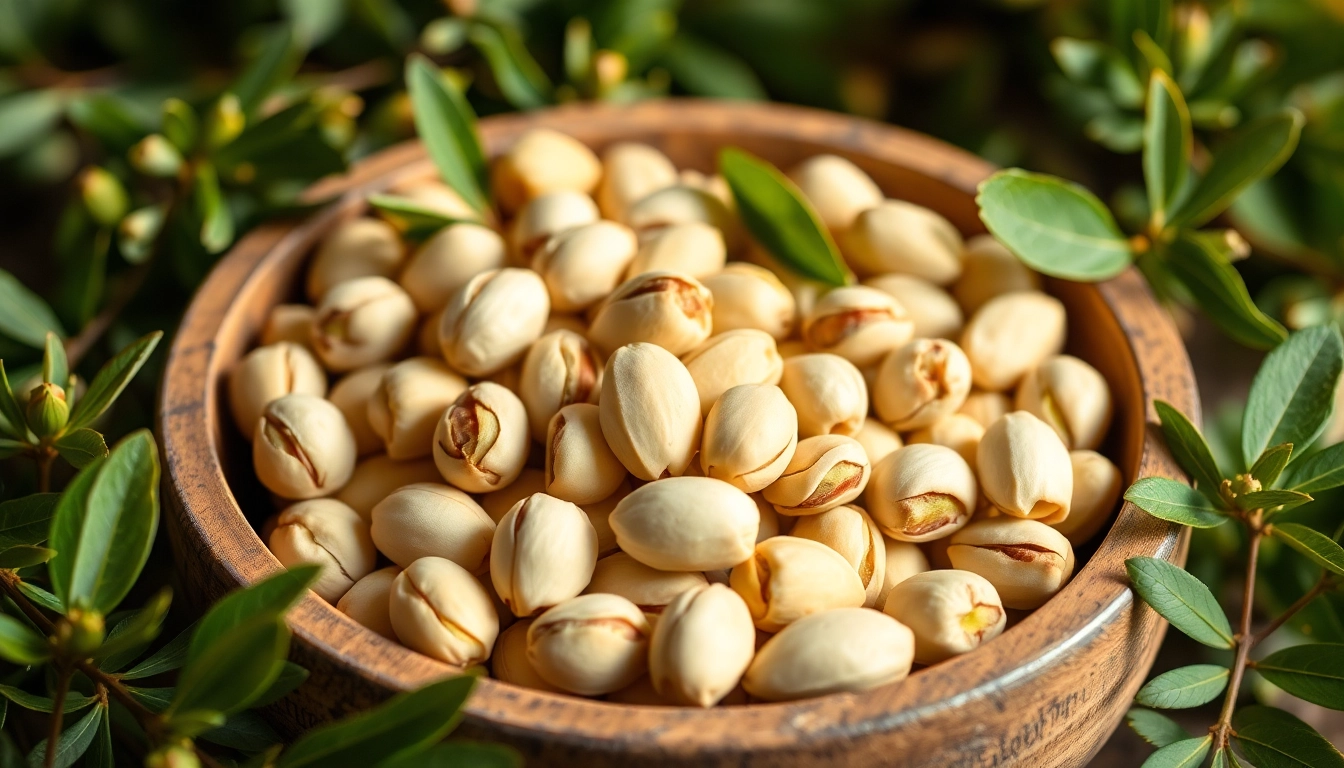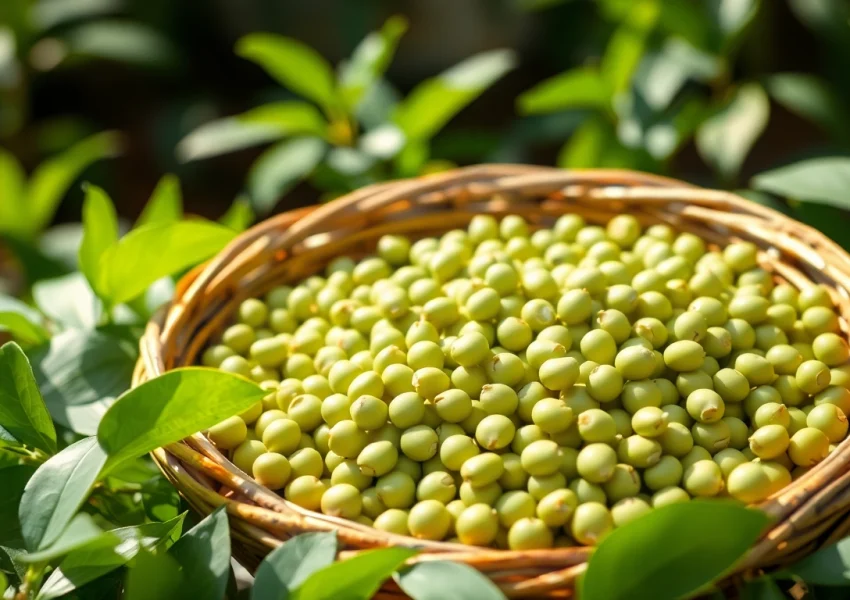Introduction to Pistachio Nuts
Pistachio nuts, known scientifically as Pistacia vera, belong to the cashew family and are recognized as one of the oldest cultivated nuts in the world. These delightful green seeds are not only a favorite snack for many but also a treasure trove of health benefits and culinary versatility. In this comprehensive exploration, we delve deep into the nutritional profile, health advantages, culinary uses, and other essential aspects of pistachios, helping you understand why they deserve a prominent place in your diet. For further insights and healthy options, visit Pistachio Nuts.
What Are Pistachio Nuts?
Pistachio nuts are the edible seeds of the pistachio tree, originating from the region historically known as Persia. These small, oval-shaped nuts are encased in a hard shell, which splits open when the fruit ripens. While commonly mistaken as true nuts, pistachios are botanically classified as seeds of drupes, a category including various fruits with a fleshy outer covering and a hard stone containing the seed.
Historical Significance of Pistachios
The history of pistachios dates back thousands of years. Archaeological evidence suggests that pistachios were consumed in the Middle East as early as 6750 B.C. They were considered a royal delicacy in ancient times and were mentioned in ancient texts of various cultures. Even today, pistachios hold significant cultural importance in many regions, featured in celebrations and traditional dishes. Throughout history, their unique flavor and health attributes have ensured their popularity across the globe.
Nutritional Profile of Pistachio Nuts
Pistachios are nutritional powerhouses packed with essential nutrients. In a one-ounce serving (approximately 49 nuts), they contain:
- Calories: 160
- Protein: 6 grams
- Fat: 13 grams (mostly healthy fats)
- Carbohydrates: 8 grams
- Fiber: 3 grams
- Vitamin B6: 30% of the Recommended Daily Allowance (RDA)
- Thiamine: 20% of the RDA
- Phosphorus: 15% of the RDA
- Potassium: 8% of the RDA
These nuts are also rich in antioxidants, particularly lutein and zeaxanthin, which are beneficial for eye health, and can help reduce the risk of chronic diseases.
Health Benefits of Pistachio Nuts
Antioxidant Properties and Heart Health
Research indicates that the high antioxidant content in pistachios can contribute significantly to heart health. Antioxidants help combat oxidative stress, which is a key factor in the development of heart diseases. Furthermore, pistachios are rich in unsaturated fats, which can improve lipid profiles, reducing bad cholesterol (LDL) while increasing good cholesterol (HDL). A study published in the American Journal of Clinical Nutrition found that incorporating pistachios into a diet led to a decrease in blood pressure, further supporting cardiovascular health.
Weight Management Support with Pistachio Nuts
Pistachios can be a beneficial component of weight management strategies. With their relatively low caloric content compared to other nuts and their high protein and fiber content, pistachios promote feelings of fullness and satiety. Research shows that including them in a balanced diet can help curb appetite without excessive calorie intake, making them an excellent snack choice for weight-conscious individuals.
Potential Cognitive Benefits and Nutritional Value
Several studies have suggested a link between pistachios and improved cognitive function. The presence of antioxidants and healthy fats may help in protecting the brain from age-related decline. Additionally, vitamins and minerals, such as vitamin B6, are crucial for brain health, contributing to neurotransmitter function and cognitive activity.
Culinary Uses of Pistachio Nuts
Recipes Featuring Pistachio Nuts
Pistachios are incredibly versatile in the kitchen. They can be used in both sweet and savory dishes. Here are a few delightful recipes:
- Pistachio Crusted Salmon: Blend pistachios with herbs and spices to create a flavorful crust for baked salmon.
- Pistachio Ice Cream: Incorporate ground pistachios into homemade ice cream for a creamy, nutty treat.
- Pistachio and Raspberry Salad: Toss fresh greens with raspberries, feta cheese, and toasted pistachios for a refreshing salad.
Incorporating Pistachios in Snacks and Meals
Pistachios can easily be incorporated into various snacks. They can be eaten raw, roasted, or salted, making them a delightful quick snack. Furthermore, their unique flavor makes them an ideal addition to trail mixes, yogurt, oatmeal, and baking recipes.
Creative Ways to Use Pistachio Nuts
Beyond traditional snacking, pistachios offer various creative uses. Consider using them to make:
- Pistachio Butter: Blend roasted pistachios into a creamy butter for a nutritious spread.
- Pistachio Flour: Use ground pistachios in gluten-free baking, adding flavor and nutrition to baked goods.
- Pistachio Hummus: Incorporate ground pistachios into hummus for an interesting twist on a classic dip.
Potential Side Effects and Considerations
Allergic Reactions to Pistachio Nuts
While pistachios are generally safe for most individuals, they can cause allergic reactions in susceptible persons, particularly those with tree nut allergies. Symptoms may include itching, hives, and gastrointestinal issues. If you suspect an allergy, it is crucial to consult with a healthcare professional.
Caloric Content and Portion Control
Despite their numerous health benefits, pistachios are still calorie-dense. Practicing portion control is essential to avoid unintended weight gain. A recommended serving size is about one ounce, or roughly 49 nuts. Paying attention to serving sizes can help integrate pistachios into a healthy diet without excess calorie consumption.
Understanding the Impact on Health
It’s essential to balance pistachio consumption within the context of a well-rounded diet. While they are nutritious, they should complement other foods rich in different vitamins and minerals. Moderation and variety remain key principles for achieving optimal health.
Where to Find High-Quality Pistachio Nuts
Choosing the Right Supplier
When looking for high-quality pistachios, it’s important to select reputable suppliers known for their freshness and quality. Look for brands that provide detailed sourcing information and offer products that are free from additives and preservatives.
Purchasing Options: Bulk vs Retail
Pistachios can be purchased in both bulk and retail packages. Buying in bulk is often more economical and allows for greater flexibility in storage. However, retail packages can be convenient for occasional use or trial of different flavors, such as roasted or flavored varieties.
How to Store Pistachio Nuts Properly
To maintain their freshness, it’s crucial to store pistachios correctly. Keep them in an airtight container in a cool, dry place. For longer shelf life, consider refrigeration, as this can help preserve their quality and prevent rancidity.






